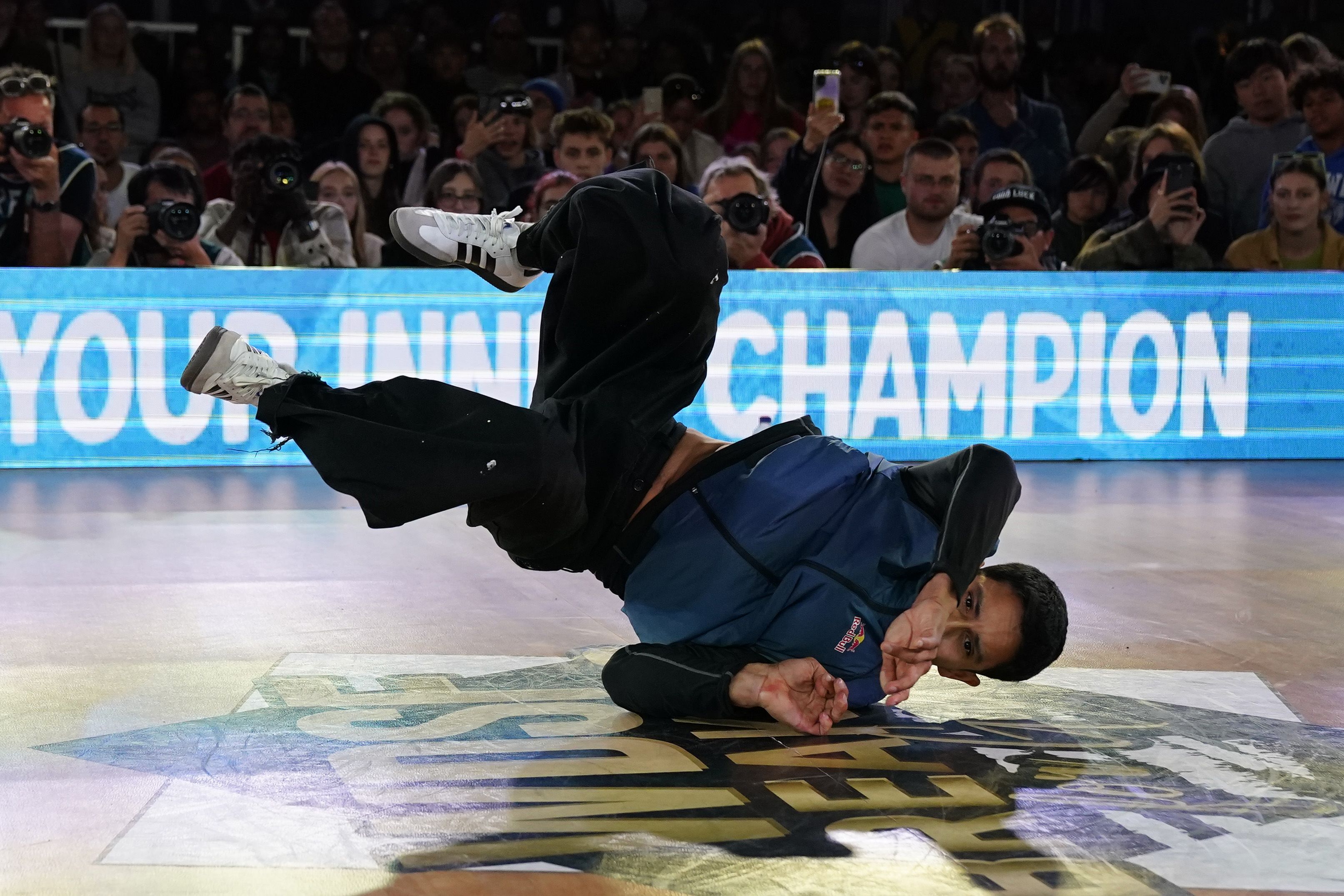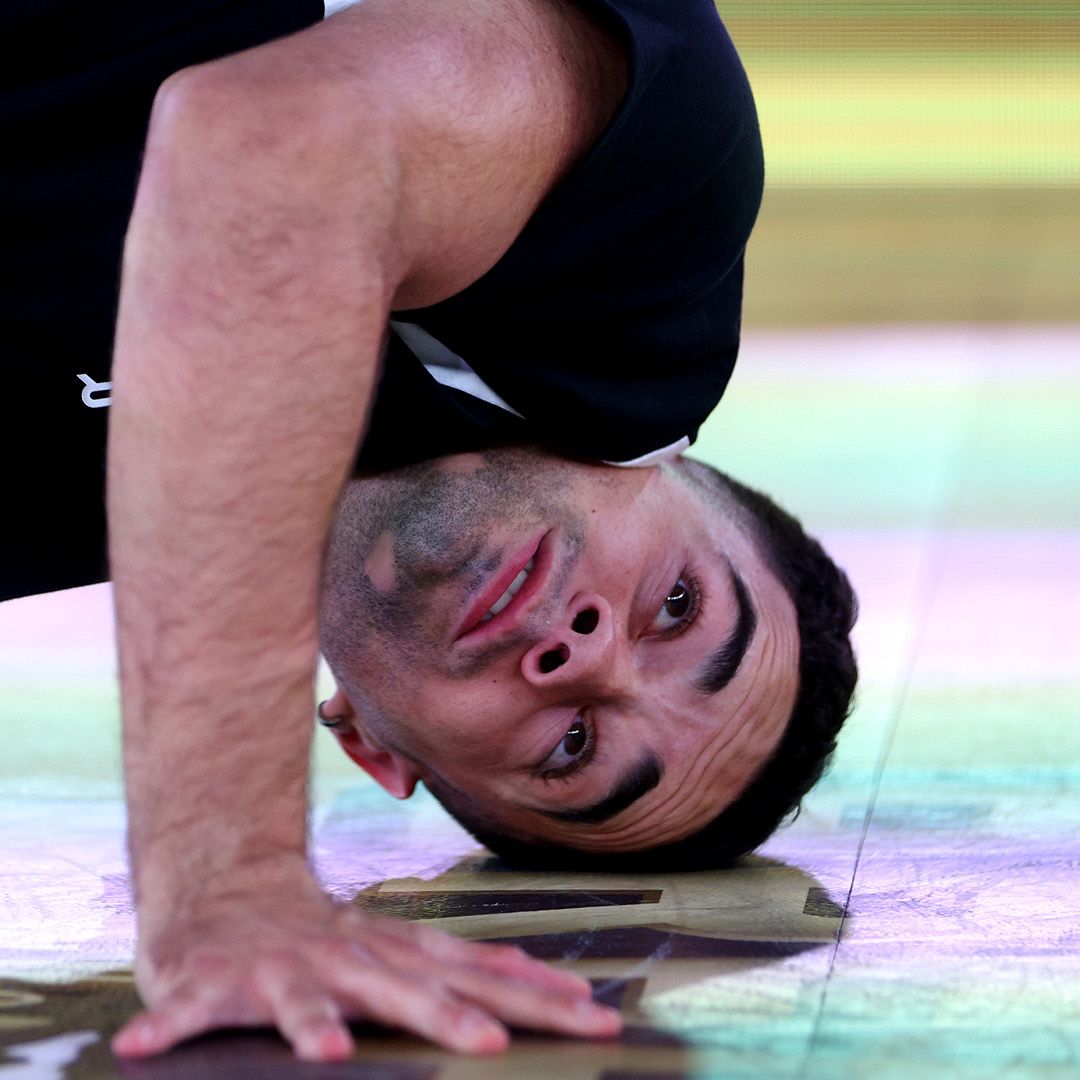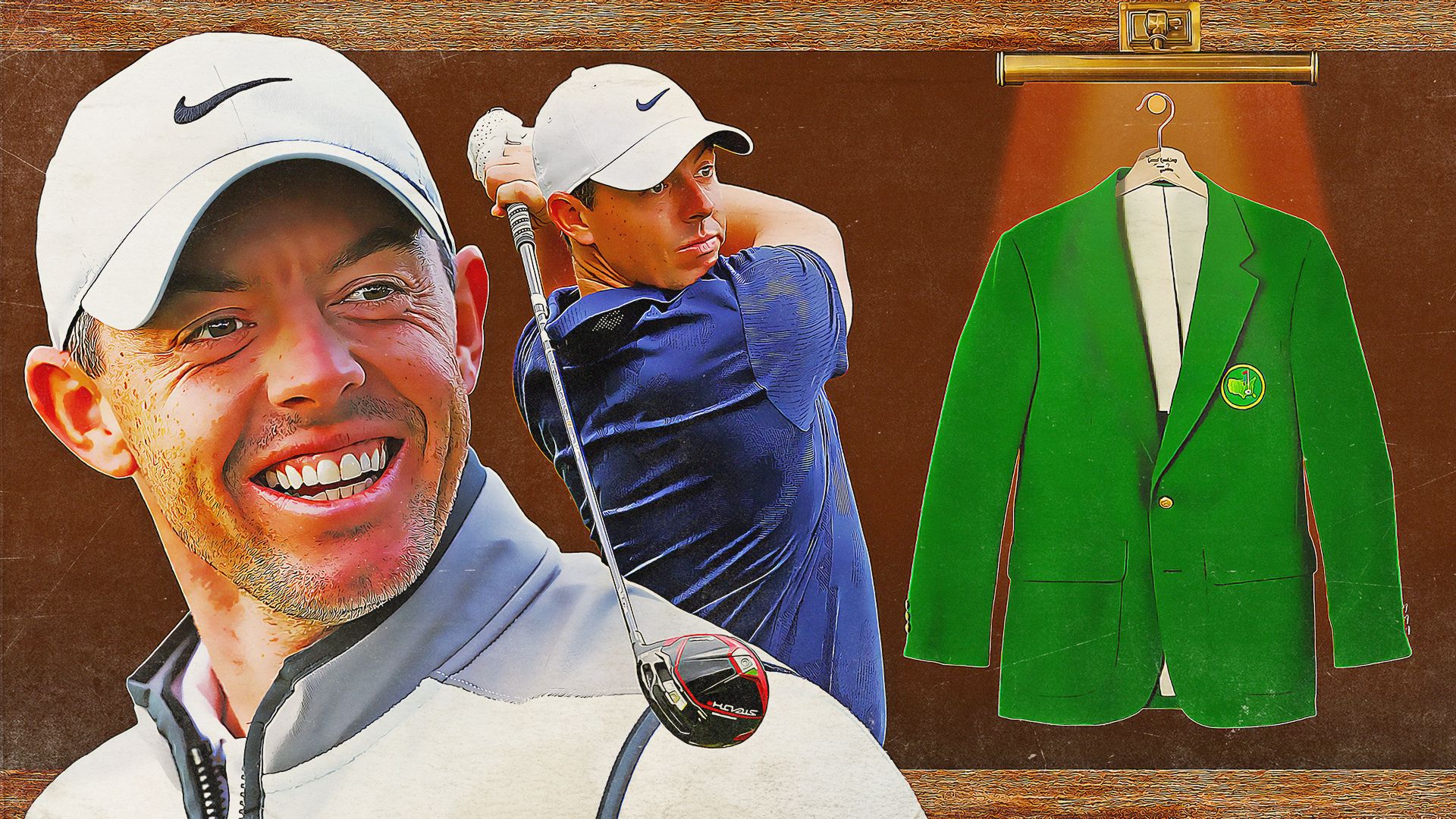Breaking The new Olympic sport for 2024 explained


From New York to Paris
Breaking
The new Olympic sport
for 2024 explained
Paris 2024 will give an Olympic Games debut to the sport of breaking – a style of street dance that originated in 1970s New York City.
Attracting new and younger audiences is a high priority for Olympic chiefs, and in their push to remain relevant that means breaking joins skateboarding, sport climbing and BMX freestyle among urban sports on the schedule.
Rising out of the Bronx in the 1970s, breaking is characterised by acrobatic movements, speedy footwork and a hip-hop soundtrack, and the new addition is set to bring a party atmosphere to the French capital this summer.
New York 1973
Let the party begin...

History of breaking
The birth of breaking came in tandem with that of hip-hop 50 years ago. In the Bronx, the most northerly of New York's five boroughs, breaking would become an integral part of the lively outdoor gatherings that became known as block parties, along with booming sound systems. Taking inspiration from different dance and music styles, breaking developed into a fast-growing cultural touchstone within communities.

The ‘break’ in a song is where all vocals and other instruments drop out, leaving just the percussion. A founding father of the breaking movement, DJ Kool Herc, noticed while performing at block parties that people would dance sporadically whenever the breaks in the tracks he was playing came in.

He started to play two copies of the same record, mixing between them on two turntables so that he could extend the break and dancers would have more time to showcase their moves.
As more communities embraced breaking, dancers brought their own heritage and flair, forming crews that would face each other in dance battles. The International Battle of the Year was created in 1990 and is recognised as the first large-scale judged breaking competition.
It was introduced to the Olympic stage in 2018 at the Youth Games in Buenos Aires and, following its huge success, has been selected as a new sport for the big stage in Paris.






Understanding the language of breaking
Breaking has a vernacular all of its own. So what are the key terms?
Battle
When two solo breakers or two breaking crews go head to head in a competition.
b-boys & b-girls
A male or female who practises the dance of breaking.
Cypher
A circle that breakers form and dance within. Breakers go in a cypher one at a time to dance to the music and battle each other.
Throw down
When a b-boy or b-girl hits the floor and starts breaking.
What are common breaking moves?
Breaking takes inspiration from many different corners of the globe, from Latin dancing to kung fu. It involves acrobatic moves and complex footwork, from flips and tricks to a dancer spinning on their head.
Top rock

Down rock

Windmill

Freeze

How does Olympic breaking work?
Dancers will compete in one-on-one battles consisting of two 60-second throw downs (three in the knockout phase), with DJs spinning the music, a host on the microphone and nine judges who vote at the end of each battle to decide the winner.
A DJ selects the music and decides which tracks will be played during the battle while breakers freestyle or improvise their routines, taking it in turns to show their moves and receiving marks for technique, vocabulary (the variety of moves incorporated), execution, musicality and originality.
Instead of scoring each of these criteria, judges use a digital slider, sliding towards the breaker who is winning the head-to-head match-up. So, if breaker A is performing better than breaker B, judges will move the slider towards their side.
Each of the five categories accounts for 20% of the final score. Based on the average of the sliders in these five criteria, one breaker is named the winner of each round.
Breaking venue

Format and schedule
The breaking action will take place across two days at Paris' Place de la Concorde – a major public square situated at the end of the Champs-Elysees, where the other urban sports are also being held.
Two gold medals are up for grabs, with 32 breakers competing. The 16 women are in action on 9 August and 16 men on 10 August.
Each set of 16 competitors will be divided into groups of four for a round-robin stage, where all breakers battle the others in their group. The top two in each group move into the quarter-finals, which is the start of the knockout phase.


Who are the ones to watch?
There is serious prestige in the battle to win a historic first breaking medal in Paris this summer and qualification is already well under way.
Seven breakers in each event have booked places, with 2023 world champions b-boy Victor of the United States and b-girl Nicka of Lithuania becoming the first to qualify.
Three British hopefuls will battle for a place in Paris at the Olympic Qualifier Series (OQS) which takes place on 17-19 May in Shanghai and 20-23 June in Budapest.
Of the 80 dancers involved across those events – 40 male and 40 female – seven women and seven men will secure spots at the Games.
There will be no British involvement in the women’s category, with no b-girls qualifying for the Games or the OQS.

B-boy Victor
B-boy Victor, otherwise known as Victor Montalvo, is an American breaker from Florida who secured his place in Paris this summer by winning the World Championship in Belgium last year.
His father, Victor Bermudez, and uncle, Hector, were important figures in the evolution of Mexican breaking.
Known for bringing style and personality to his performances, Paris podium prospect Victor also won gold at the 2022 World Games, showcasing his creativity and individuality.

B-girl Nicka
B-girl Nicka, or Dominika Banevic, became the women's breaking world champion last year at just 16 years old, booking her Olympic place.
One of the youngest competitors on the scene, the Lithuanian is also the European champion and evidently age does not hold her back against more experienced competitors.

B-boy Kid Karam
B-boy Kid Karam - Karam Singh - won silver representing Britain at the 2022 European Championships after taking up breaking aged eight when he was inspired by a Justin Timberlake music video. Practising in his garage in Derby, the 26-year-old has garnered a large TikTok following by showcasing his creativity and personality.

B-boy Sunni
B-boy Sunni - aka Sunni Brummitt, 29 - has competed at the prestigious Red Bull BC One World Final more times than any other British breaker. He has gathered a solid fan base on the back of his dynamism and creative moves.s and symbols.
B-boy Sheku - Sam Phillips - earned the nickname 'Thready Krueger' on the breaking scene on account of his intricate and detailed style. Taking his inspiration from movies and cartoons, the 26-year-old has numerous breaking titles in the UK.
Will breaking remain an Olympic sport?
At this stage, it might seem an obvious leap to suggest there is always Los Angeles in 2028 for those that miss out this summer.
However, here is the downer for prospective b-boys and b-girls: breaking has been left off the programme for LA.
The World Dance Sport Federation has said it is working hard to win back favour for Brisbane 2032, and its two days in the spotlight in the heart of Paris could have an impact on those prospects.

Credits
Editor: Sonia Oxley
Written by: Jess Anderson
Design by: Lee Martin
New York Illustration: Ryan Olbrysh
Type Illustration: Nicolaas Kotzé
Video edit: Thiago Braz
Subbed by: John Skilbeck
More long reads

How City of lights changed
the Olympics
BBC Sport looks back to the last time Paris hosted the Olympics in 1924.

Mcllroy at the Masters
BBC Sport looks at the data to assess whether he will finally achieve his goal.
